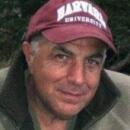In footsteps of Lewis, Clark
- Share via
Part 2: If you read me last week you will note that I am adventuring for the 29th year in the Far West, teaching college kids the history of Lewis and Clark and how to survive on the land.
After all these years I am convinced that survival is the alchemy of skill, brute determination and endurance.
We are on the Upper Missouri River in northern Montana canoeing in the footsteps of Lewis and Clark. Our 100-mile journey takes us through some of the most wild and remote country in America.
The Missouri River and the land that it waters is a spiritual geography. Words hardly capture the hidden essence of wilderness, or reveal its melancholy, mystery and charm. Experiencing the intensity of a wild moment in the bush, moments later you discover the source of its electricity: the warm remains of a grizzly bear kill or the moist tracks of a wolverine requires that you spend some time on the prairie.
Emerson wrote, “…the supreme being doesn’t build nature around us, but puts it forth through us.”
I can’t explain why, but I feel a connection to the Missouri River. It is alive! William Least Heat-Moon, a Native American philosopher and writer, says, “It is a river that speaks: I am a grandfather spirit; I have a life.” The Missouri with its treacherous current, snags and sandbars says to the traveler, “Come up me!”
It’s an endless journey. With its twists and turns and its seething pulse, it seems to speak as it groans and moans. What drew Lewis and Clark up this river was an unformed and unarticulated sense that their country’s destiny lay that way. They journeyed at Jefferson’s behest. What draws me up the river is that I am plagued with an insatiable quest for adventure and the unknown; so I go high-hearted, with a spirit for the new.
The Missouri is known as the Big Muddy, and I can see no reflection. But those who are patient and can listen find a sense of place and abject contentment by floating its current.
I see the men of the Corps of Discovery knee-deep in the river with ropes tied around their waist, pulling the keelboat up a current that displaces 20,000 cubic feet of water per second. I see Lewis walking the shoreline collecting specimens to send back to the scientist president. His collections will someday be encased in the Smithsonian.
I see John Colter, Patrick Gass, John Ordway and Joseph Whitehouse hunting elk and buffalo, fighting grizzly bears and sewing clothing from tanned hides.
But mostly in the evenings, while sipping brewed tea around a smoky campfire, I find a quiet respite. My imagination then gets the best of me, and I can see the captains, sitting around the fire writing their journals, and with each word they scribe, they dip their quill in ink and subsequently they created an American epic in the prose of “The Journals of Lewis and Clark.”
I see the men working the gear, laughing and re-accounting the day’s adventures; I see York, Clark’s black slave, cleaning the weapons. But what I find most astounding is the Indian girl, the teenager, Sacagawea, nursing her infant son, Jean Baptiste, the youngest member of the Corps of Discovery. The metaphors of that scene are endless. I encourage you to probe deeper into this remarkable happenstance.
“Dr. Joe! “ Graham Miketta yells. My vision immediately evaporates. “What time is reveille?”
“Zero-dark hundred,” I respond.
I grab my fountain pen, dip it in blue-black ink and scribble the words of an unknown author in my journal: “We live in suspense from day to day; from hour to hour we are the hero of our own story.”
JOE PUGLIA is a practicing counselor, a professor of education at Glendale Community College and a former officer in the Marines. Reach him at doctorjoe@ymail.com.
